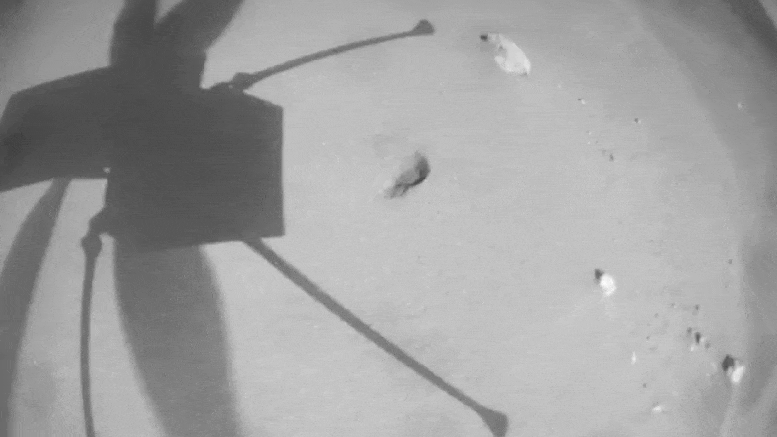Images uploaded from Mars record a recent flight in which NASA's "smart" Mars helicopter flew farther and faster than before It is reported that the black-and-white navigation camera on the "smart" provided a dramatic video of its record breaking 25th flight, which took place on April 8.

At that time, it flew a distance of 2310 feet (704 meters) at a speed of 12 miles per hour (5.5 meters per second), which was the longest and fastest flight the red planet rotorcraft has ever carried out.
"During our record breaking flight, the top view navigation camera of the smart provided us with an amazing feeling, that is, the feeling of sliding 33 feet above the surface of Mars at the speed of 12 miles per hour," said Teddy tzanetos, the leader of the smart team at NASA Jet Propulsion Laboratory (JPL) in Southern California.
The first frame of the video begins about a second after the flight. After reaching an altitude of 33 feet (10 meters), the helicopter flew southwest and accelerated to its maximum speed in less than three seconds. The rotorcraft first flew over a group of sand ripples, and then flew over several rock fields in about half of the video. Finally, relatively flat and featureless terrain appeared below, which provided a good landing site for the aircraft. It is understood that the smart team accelerated the 161.3-second flight video for about five times, thereby reducing the length to less than 35 seconds.
The navigation camera has been set to disable as long as the rotorcraft is within 3 feet (1 meter) of the ground. This helps ensure that any dust raised during takeoff and landing does not interfere with the navigation system's tracking of ground features.
The flight of the smart is autonomous. JPL's pilots plan to fly and send instructions to the Mars rover perseverance, which will then forward these instructions to the helicopter. During flight, airborne sensors - navigation camera, inertial measurement unit and laser rangefinder - provide real-time data to the navigation processor and main flight computer of the smart to guide the flight of the helicopter. This allows the witty to respond to the landscape while executing orders.
Mission controllers recently lost contact with the smart after the rotorcraft went into low power. Now that the rotorcraft has resumed contact and obtained enough energy from its solar array to charge its six lithium-ion batteries, the team is looking forward to its next flight on Mars.